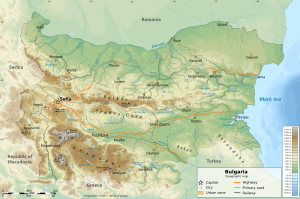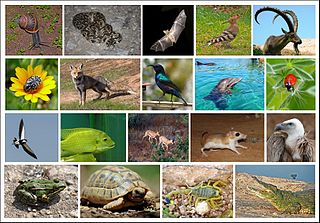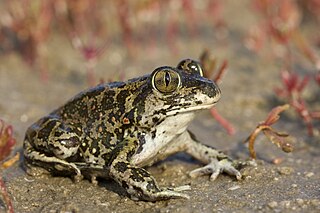
Bulgaria is a country in southeastern Europe situated entirely in the Balkan peninsula. Bulgaria is inhabited by 22 autochthonous amphibian species, which makes the amphibians the least diverse class of vertebrates in the country. [1] They include nine species of newts and salamanders from a single family, Salamandridae, as well as 13 frog and toad species from five families—Bombinatoridae, Bufonidae, Hylidae, Pelobatidae and Ranidae. The most recently classified species are the northern crested newt, identified in 2005, [2] and the Macedonian crested newt, identified in 2007. [3] In 2017 genetic studies suggested that the smooth newt was a species complex and was split in six species, of which three are found in Bulgaria—the smooth newt sensu lato, the Greek smooth newt and the Schmidtler's smooth newt. [4] Some of the most common species include the European green toad, yellow-bellied toad, and marsh frog.
Contents
- List of species
- Order Caudata
- Order Anura
- See also
- Footnotes
- Notes
- Citations
- References
- Sources
- External links
The foundations of Bulgarian herpetology (the study of amphibians and reptiles) were laid in the end of the 19th century by the teacher Vasil Kovachev, who published a number of articles on the subject and the 1912 book Herpetologic Fauna of Bulgaria. [5] In the 1930s and 1940s zoologist Ivan Buresh and his associate Yordan Tsonkov conducted in-depth research on the diversity and distribution of the amphibian and reptile species in the country. In the second half of the 20th century the leading Bulgarian herpetologist was Dr. Vladimir Beshkov. [5]
Bulgaria provides various habitats for amphibians. The country falls within six terrestrial ecoregions of the Palearctic realm: Balkan mixed forests, Rodope montane mixed forests, Euxine-Colchic deciduous forests, Aegean and Western Turkey sclerophyllous and mixed forests, East European forest steppe and Pontic–Caspian steppe. [6] Bulgaria has varied topography. From north to south the main geomorphological regions are the Danubian Plain, the Balkan Mountains, the Sub-Balkan valleys, the Rila–Rhodope massif to the south-west, the Upper Thracian Plain and the Strandzha mountains to the south-east. The country has a dense network of rivers but with the notable exception of the Danube, they are mostly short and with low water flow. [7] The average annual precipitation is 670 mm; the rainfall is lower in the lowlands and higher in the mountains. The driest region is Dobrudzha in the north-eastern part of the Danubian Plain (450 mm), while the highest rainfall has been measured in the upper valley of the river Ogosta in the western Balkan Mountains (2293 mm). [8]































